Did you know that tire manufacturers rate every tire type with a load index? Did you know they stamp the load index on the side of each tire? The load index (sometimes called the weight index) represents the maximum amount of weight each tire is rated to carry, and it is a critical aspect of your tires: If you are replacing your tires and buy ones with a lower load index, you risk a blowout. Knowing your tire load index is important for proper vehicle maintenance. Learn how to find your tire load index and decode it with our handy tire load index chart explained below.
If you know how to read the letters and numbers on tires, you already know that the first number in your tire size is your tire width in millimeters. You already know the second number (after the first slash) is the aspect ratio between your tire’s width and sidewall height.
And you know the third number (usually after the letter R) is your rim diameter in inches.
You may not have known that the number after the rim diameter (and the second slash) is not a measurement at all: it is a code. This two-digit or three-digit code represents your tire’s load index. The higher this number, the higher the weight each tire is rated to carry.
For example:
Most passenger cars and light trucks come from the factory on tires with load indexes between 70 and 126. These tires are rated to carry anywhere from 739 pounds to 3,748 pounds–each. These numbers do not represent weight or tons, they are a code and require a tire load index chart to decode.
Remember, the total load index of your set of tires is not necessarily the same as your vehicle’s maximum load. There are many aspects of your car that can fail before your tires. The load index on your tire is simply the max tire weight that one tire is rated for.
| Load Index | Maximum Weight (Pounds) |
| 70 | 739 lbs |
| 71 | 761 lbs |
| 72 | 783 lbs |
| 73 | 805 lbs |
| 74 | 827 lbs |
| 75 | 853 lbs |
| 76 | 882 lbs |
| 77 | 908 lbs |
| 78 | 937 lbs |
| 79 | 963 lbs |
| 80 | 992 lbs |
| 81 | 1019 lbs |
| 82 | 1047 lbs |
| 83 | 1074 lbs |
| 84 | 1102 lbs |
| 85 | 1135 lbs |
| 86 | 1168 lbs |
| 87 | 1201 lbs |
| 88 | 1235 lbs |
| 89 | 1279 lbs |
| 90 | 1323 lbs |
| 91 | 1356 lbs |
| 92 | 1389 lbs |
| 93 | 1433 lbs |
| 94 | 1477 lbs |
| 95 | 1521 lbs |
| 96 | 1565 lbs |
| 97 | 1609 lbs |
| 98 | 1653 lbs |
| 99 | 1709 lbs |
| 100 | 1764 lbs |
| 101 | 1819 lbs |
| 102 | 1874 lbs |
| 103 | 1929 lbs |
| 104 | 1984 lbs |
| 105 | 2039 lbs |
| 106 | 2094 lbs |
| 107 | 2149 lbs |
| 108 | 2205 lbs |
| 109 | 2271 lbs |
| 110 | 2337 lbs |
| 111 | 2403 lbs |
| 112 | 2469 lbs |
| 113 | 2535 lbs |
| 114 | 2601 lbs |
| 115 | 2679 lbs |
| 116 | 2756 lbs |
| 117 | 2833 lbs |
| 118 | 2910 lbs |
| 119 | 2998 lbs |
| 120 | 3086 lbs |
| 121 | 3197 lbs |
| 122 | 3307 lbs |
| 123 | 3417 lbs |
| 124 | 3527 lbs |
| 125 | 3638 lbs |
| 126 | 3748 lbs |
| 127 | 3858 lbs |
| 128 | 3968 lbs |
| 129 | 4079 lbs |
| 130 | 4189 lbs |
| 131 | 4289 lbs |
| 132 | 4409 lbs |
| 133 | 4541 lbs |
| 134 | 4674 lbs |
| 135 | 4806 lbs |
| 136 | 4938 lbs |
| 137 | 5071 lbs |
| 138 | 5203 lbs |
| 139 | 5357 lbs |
| 140 | 5512 lbs |
| 141 | 5677 lbs |
| 142 | 5842 lbs |
| 143 | 6008 lbs |
| 144 | 6173 lbs |
| 145 | 6393 lbs |
| 146 | 6614 lbs |
| 147 | 6779 lbs |
| 148 | 6844 lbs |
| 149 | 7165 lbs |
| 150 | 7385 lbs |
 Palmer/MPI/Getty Images
Palmer/MPI/Getty ImagesIt is not a great idea to replace your tires with aftermarket tires that have a lower load index. If the total weight of your vehicle and load exceeds the max tire weight for your set of tires, you risk a blowout. Likewise, if you put more weight on the front or rear tires and exceed their individual weight ratings, you also risk a blowout. And note that if you exceed your tires’ speed rating, you may suffer a blowout without even exceeding your max tire weight.
You can always upgrade your tires to aftermarket tires with a higher load index. Your new tires will be suited to carry more weight. But certain tires with a high load index are louder than stock tires or make for a stiffer ride than stock tires. Be sure to do your research before upgrading your load index.
Do you often carry heavy loads or trailer heavy loads with your vehicle? Do you worry you are approaching your tire load index? You can add together the weight each of your tires is rated for to calculate your overall max tire weight. Subtract your vehicle weight and you will have some idea how much load your tires can carry. Remember, unless the load is balanced between all your tires equally, this weight may be much lower.
Subtract your vehicle weight and you will have some idea how much load your tires can carry. Remember, unless the load is balanced between all your tires equally, this weight may be much lower.
Make certain to care for your tires: First, correctly rotate your tires, regularly. Second, store your seasonal tires properly. Don’t push the limit on used tires with worn rubber. And double-check that your tires are not involved in the Continental tire recall, or the Bridgestone and Firestone tire recalls.
Sources: Tire Rack and Driving Line
RELATED: What Type of Truck Tires Do You Need?
Disclosure: We may get commissions for purchases made through links in this post.
The amount of letters and numbers on a tire sidewall can bring anyone to ask, “What does the T or H mean on tires?” Depending on whether you are a nouveau or savvy car owner, these markings could look like an algebraic equation waiting to be solved or a bunch of helpful codes. This article aims to bridge that knowledge gap and make this plethora of information more useful for all.
This article aims to bridge that knowledge gap and make this plethora of information more useful for all.
So, what does the T or H mean on tires? The “T” or “H” on tires pertain to their speed ratings. A T-rated tire can withstand top speeds of up to 118 mph (190 km/h), while an H-rated tire can support up to 130 mph (210 km/h). It is important to note these markings and stay within those speed limits.
To help you figure out what the T and H mean on tires, this article will go over information seen on tire sidewall markings, including load indices and speed ratings. It will also provide our picks for the best H- and T-rated tires for 2021. So, stick around and learn more about H/T tires, as this guide makes it just in time for your next tire purchase.
Since we are into the topic of understanding the service description of tires, we might as well decipher the entire sidewall markings found on them. Sidewall markings provide tons of useful information about your stock or aftermarket tires, which include the following:
The first three (3) digits of the sidewall marking indicate the tire width in millimeters. It is not to be confused with tread width, which is dependent on a tire’s aspect ratio and varies between brands. Typically, you would see a letter before these numbers (either a P, C, or LT) indicating the vehicle type compatible with the said tire.
It is not to be confused with tread width, which is dependent on a tire’s aspect ratio and varies between brands. Typically, you would see a letter before these numbers (either a P, C, or LT) indicating the vehicle type compatible with the said tire.
The aspect ratio is the second pair of digits following the tire width. This number pair represents the sidewall height measured from the wheel to the top of the tread and displays in percentage.
Meanwhile, the rim diameter is the third number pair that may or may not come with a letter. In some cases, the letter that goes with the rim diameter signifies tire construction. Usually, an ‘R’ before the number pair means a radial ply construction, while a “B” or “D” means either a bias or diagonal ply construction. It is imperative to stick to the rim diameter when replacing stock rubber, especially for new vehicle owners.
Metric sizing on tire sidewalls is usually in this format – P205/65 R16. But the smaller tires on tractors, golf carts, and the like utilize flotation sizing – a system using imperial (inches) instead of metric units.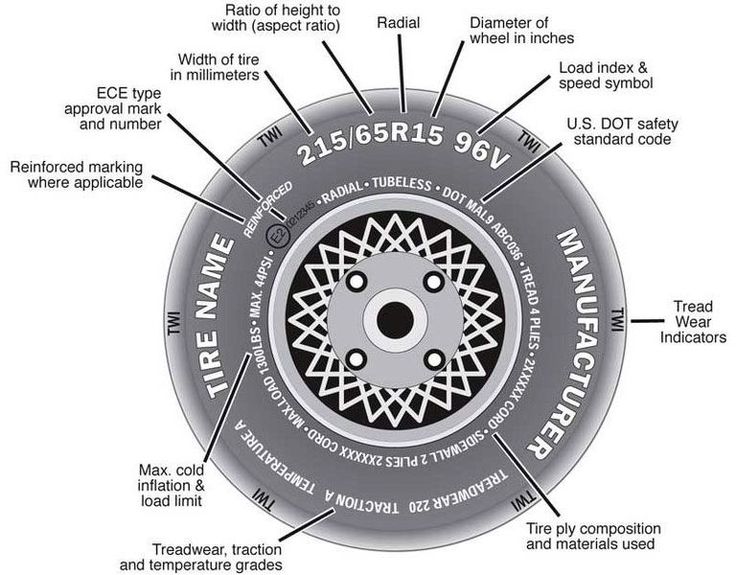 The format for this system looks something like this – 31X10.50R15LT. The first, second, and last number pairs tell you the tire height, tread width, and rim diameter, respectively.
The format for this system looks something like this – 31X10.50R15LT. The first, second, and last number pairs tell you the tire height, tread width, and rim diameter, respectively.
Numeric and alphanumeric sizing systems are old, phased-out versions of the current metric and flotation sizing systems. Alphanumeric sizing (as its name suggests) was somewhat confusing – examples are A76-14 and L78-16. Unlike metric sizing, the letter in the alphanumeric format pertained to both weight capacity and tire size. Conversely, numeric sizing only consisted of two number pairs denoting tire and rim size and was used for cars and some farm applications until the ’70s.
The load index is the number pair found on the service description bit of your tire sidewall markings. It can show as 99H or some other combination of numbers and letters. Since the assigned numerical value denotes a tire’s load-carrying capabilities, a higher load index means a higher capacity. The table below shows tire load indices ranging from 70 to 126 and their corresponding values in pounds and kilograms:
The table below shows tire load indices ranging from 70 to 126 and their corresponding values in pounds and kilograms:
| Load Index | Pounds (lbs) | Kilograms (Kg) |
|---|---|---|
| 70 | 739 | 335 |
| 71 | 761 | 345 |
| 72 | 783 | 355 |
| 73 | 805 | 365 |
| 74 | 827 | 375 |
| 75 | 853 | 387 |
| 76 | 882 | 400 |
| 77 | 908 | 412 |
| 78 | 937 | 425 |
| 79 | 963 | 437 |
| 80 | 992 | 450 |
| 81 | 1,019 | 462 |
| 82 | 1,047 | 475 |
| 83 | 1,074 | 487 |
| 84 | 1,102 | 500 |
| 85 | 1,135 | 515 |
| 86 | 1,168 | 530 |
| 87 | 1,201 | 545 |
| 88 | 1,235 | 560 |
| 89 | 1,279 | 580 |
| 90 | 1,323 | 600 |
| 91 | 1,356 | 615 |
| 92 | 1,389 | 630 |
| 93 | 1,433 | 650 |
| 94 | 1,477 | 670 |
| 95 | 1,521 | 690 |
| 96 | 1,565 | 710 |
| 97 | 1,609 | 730 |
| 98 | 1,653 | 750 |
| 99 | 1,709 | 775 |
| 100 | 1,764 | 800 |
| 101 | 1,819 | 825 |
| 102 | 1,874 | 850 |
| 103 | 1,929 | 875 |
| 104 | 1,984 | 900 |
| 105 | 2,039 | 925 |
| 106 | 2,094 | 950 |
| 107 | 2,149 | 975 |
| 108 | 2,205 | 1,000 |
| 109 | 2,271 | 1,030 |
| 110 | 2,337 | 1,060 |
| 111 | 2,403 | 1,090 |
| 112 | 2,469 | 1,120 |
| 113 | 2,535 | 1,150 |
| 114 | 2,601 | 1,180 |
| 115 | 2,679 | 1,215 |
| 116 | 2,756 | 1,250 |
| 117 | 2,833 | 1,285 |
| 118 | 2,910 | 1,320 |
| 119 | 2,998 | 1,360 |
| 120 | 3,086 | 1,400 |
| 121 | 3,197 | 1,450 |
| 122 | 3,307 | 1,500 |
| 123 | 3,417 | 1,550 |
| 124 | 3,527 | 1,600 |
| 125 | 3,638 | 1,650 |
| 126 | 3,748 | 1,700 |
You should temper information provided by the load index with manufacturer-recommended towing limits, as well as tire and drivetrain capacities. Again, the owner’s manual is the best reference for determining your vehicle’s hauling capabilities.
Again, the owner’s manual is the best reference for determining your vehicle’s hauling capabilities.
If you have been buying tires for a long time, you have seen the letters P, LT, ST, or XL attached to either the tire width or rim diameter portion of a sidewall marking. These letters indicate ply rating (a combination of load-carrying capability and tire type) and should not be confused with a tire’s load index or construction type.
Having no letter or a P with the tire size means a standard-load passenger-type tire with a 4-ply rating. The letters LT (Light Truck) or ST (Special Trailer) pertain to tires with heavier weight capacities and 6- to 14-ply ratings (load ranges from C to G). These tires are standard for pickups and SUVs, with ST tires strictly for use with trailers. One best practice is not to go lower than 8-ply-rated tires if you own a vehicle with a load capacity from 3/4 to 1 ton.
Looking at the sidewall markings with the metric sizing, load information, and ply rating at the top center, you should spot the maximum inflation somewhere on the left inner circle of the tire, beneath the brand name.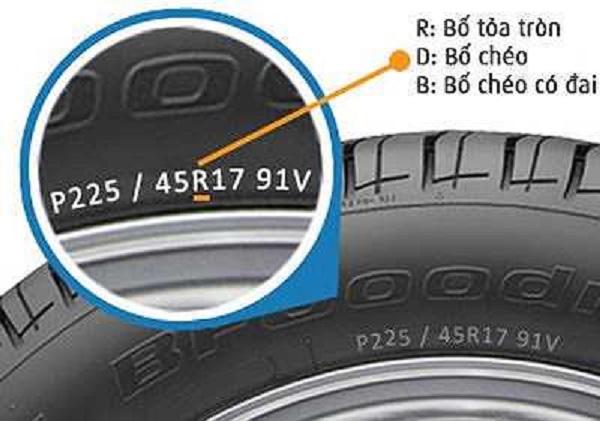 It is easily distinguishable because of this specific format “Maximum load XX lbs., (XX Kg.) at XX psi.”
It is easily distinguishable because of this specific format “Maximum load XX lbs., (XX Kg.) at XX psi.”
Most passenger cars typically show between 44 psi and 51 psi, while light trucks and trailers range from 50 psi to 80 psi. The maximum inflation largely depends on a tire’s ply rating and is not the same as the recommended tire pressure for your tire of choice. If you need information on cold tire pressure, refer to your owner’s manual.
Some tire brands would have “M+S” markings to indicate that they have met minimum requirements to work decently on these types of terrains. Usually, this is the case with 4WD and 2WD tires with extra spaces between their tread blocks. However, note that no tire actually works seamlessly on either mud or snow – except for those with the three-peak mountain snowflake icon on them.
Although not yet a standard on all tires, these markings tremendously help consumers purchase the correct tires for their vehicles. Tires either have a directional or asymmetrical tread pattern, which works for different kinds of applications. Directional or chevron patterns help disperse water and reduce aquaplaning. Whereas asymmetrical patterns serve different purposes all at once – improved acceleration and cornering, enhanced water dispersion, and better grip – as in the case of performance tires.
Tires either have a directional or asymmetrical tread pattern, which works for different kinds of applications. Directional or chevron patterns help disperse water and reduce aquaplaning. Whereas asymmetrical patterns serve different purposes all at once – improved acceleration and cornering, enhanced water dispersion, and better grip – as in the case of performance tires.
DOT (Department of Transportation) codes contain information about the manufacturing plant, model designation, and manufacture date of a given tire. Since the other details are redundant and found elsewhere on the sidewall markings, vehicle owners usually refer only to the date and manufacturer portions of the DOT code. Industry experts deem identifying the tire age based on its manufacture date important since tires are ideally useable only for up to six (6) years from their manufacture date.
The first two digits of the DOT code specify the manufacturing plant and is especially useful for private brand tires.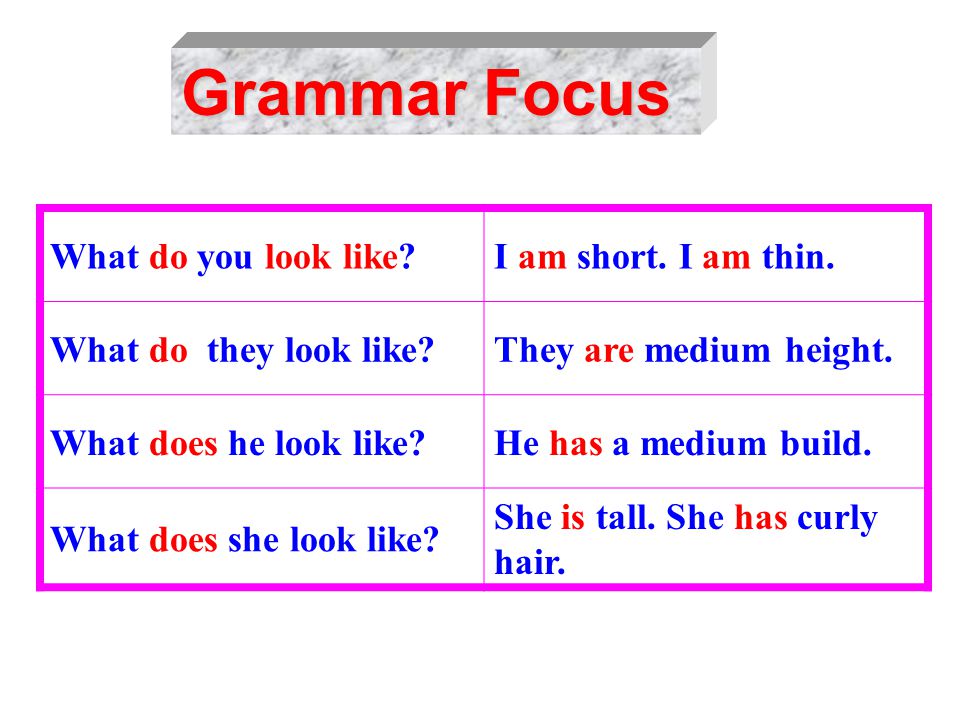 Meanwhile, its last three or four digits pertain to its date code. Tires manufactured before 2000 would have three digits, and post-2000 ones would have four digits. The first two numbers show the week, and the last two numbers indicate the year of manufacture.
Meanwhile, its last three or four digits pertain to its date code. Tires manufactured before 2000 would have three digits, and post-2000 ones would have four digits. The first two numbers show the week, and the last two numbers indicate the year of manufacture.
Although the service description comes after the rim diameter information, I purposely reserved the topic for this section to better answer, “What does the T or H mean on tires?” Simply put, tire speed rating H vs T are just two of the 31-speed ratings currently used on tires. This table showing a complete outline of speed ratings (plus a brief background on how they are determined) should help you better understand speed ratings as a whole:
| Speed Rating | mph (km/h) | Application |
|---|---|---|
| A1 | 3 mph (5 km/h) | |
| A2 | 6 mph (10 km/h) | |
| A3 | 9 mph (14 km/h) | |
| A4 | 12 mph (19 km/h) | |
| A5 | 16 mph (26 km/h) | |
| A6 | 19 mph (31 km/h) | |
| A7 | 22 mph (35 km/h) | |
| A8 | 25 mph (40 km/h) | |
| B | 31 mph (50 km/h) | |
| C | 37 mph (60 km/h) | |
| D | 40 mph (64 km/h) | |
| E | 43 mph (69 km/h) | |
| F | 50 mph (80 km/h) | |
| G | 56 mph (90 km/h) | |
| J | 62 mph (100 km/h) | |
| K | 68 mph (109 km/h) | |
| L | 75 mph (120 km/h) | Off-Road & Light Truck Tires |
| M | 81 mph (130 km/h) | Temporary Spare Tires |
| N | 87 mph (140 km/h) | |
| P | 93 mph (150 km/h) | |
| Q | 99 mph (160 km/h) | Studless & Studdable Winter Tires |
| R | 106 mph (170 km/h) | Heavy-Duty Light Truck Tires |
| S | 112 mph (180 km/h) | Family Sedans & Vans |
| T | 118 mph (190 km/h) | Family Sedans & Vans |
| U | 124 mph (200 km/h) | Sedans & Coupes |
| H | 130 mph (210 km/h) | Sport Sedans & Coupes |
| V | 149 mph (240 km/h) | Sport Sedans, Coupes & Sports Cars |
| Z / ZR | 149 mph+ (240 km/h+) | |
| W | 168 mph (270 km/h) | Exotic Sports Cars |
| Y | 186 mph (300 km/h) | Exotic Sports Cars |
| (Y) | 186 mph+ (300 km/h+) | Exotic Sports Cars |
The system was first developed in Europe (specifically Germany’s Autobahn) in the ’60s and began with only three letters – S, H, and V.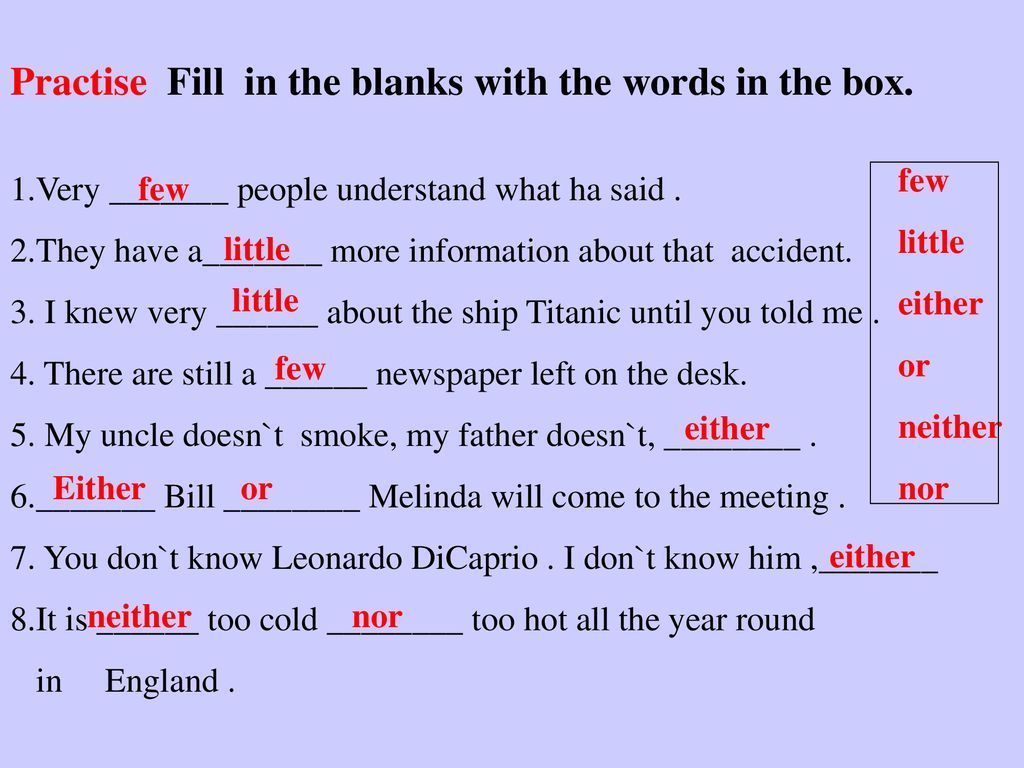 Eventually, the introduction of new speed classes and the development of tire technology led to utilizing most of the alphabet. Current speed ratings mostly appear in alphabetical order – except for the “H” rating, which retained its placement between “U” and “V.”
Eventually, the introduction of new speed classes and the development of tire technology led to utilizing most of the alphabet. Current speed ratings mostly appear in alphabetical order – except for the “H” rating, which retained its placement between “U” and “V.”
Running different tires in 6.2-mph steps at 10-minute increments until they meet required speeds helped establish the corresponding values for the speed ratings. At present, engineers still run this SUS (Step-Up Speed) Test but in compliance with ECE (Economic Commission for Europe) and SAE (Society of Automotive Engineers standards.
In addition to time-controlled testing and ideal riding conditions, industry leaders take other factors like ride quality/comfort, wear resistance, and cornering ability into account in determining a given tire’s speed rating. Simply put, a higher speed rating would mean improved traction and stopping power but compromised tread life. Conversely, a lower speed rating could translate to enhanced tire performance but lower top speed.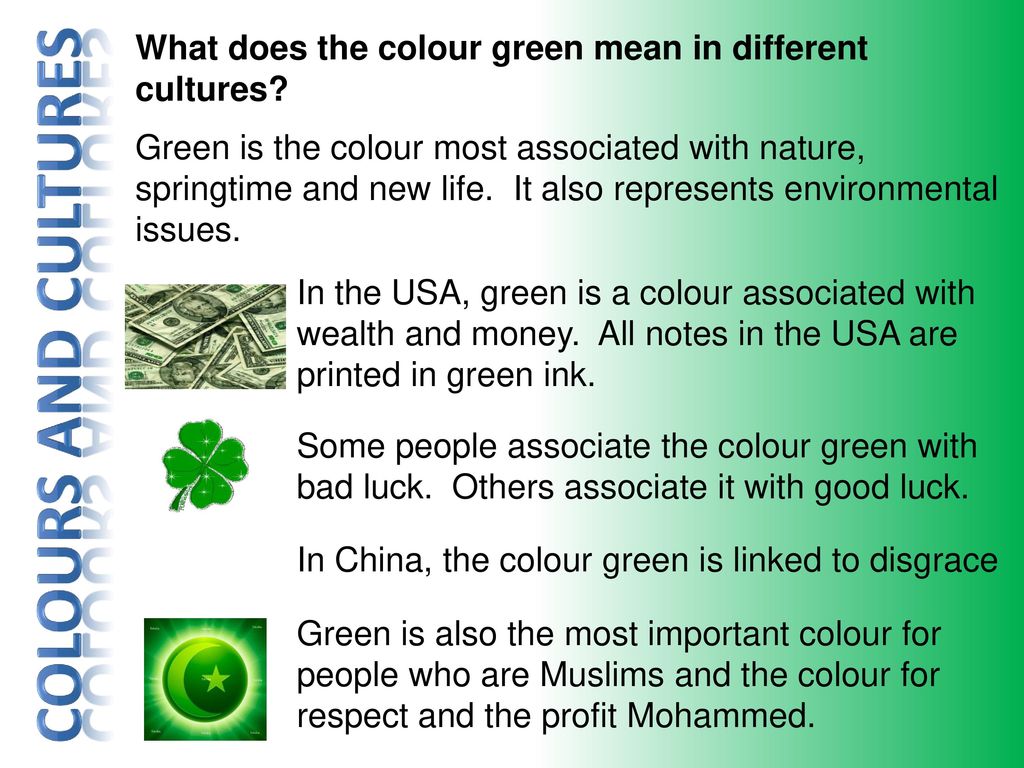
Trivia: Before 1991, speed ratings were mixed with tire size information that confused some consumers. The service description was added on sidewall markings beginning 1991 onward to address this, separating the speed rating and load index from the rim diameter information.
Out of all the speed ratings, tires with “H” and “T” markings are the most frequently used on sedans, family cars, and SUVs. Under optimal riding conditions, these specific tires can tolerate speeds ranging from 118 mph (190 km/h) to 130 mph (210 km/h).
Specifically, H-rated tires fall under the grand touring category and are best for sport/luxury coupes, sedans, and amateur racing cars (despite not being designed for full-fledged performance vehicles). Meanwhile, T-rated tires fall under the standard touring and all-season categories and are ideal for family cars and minivans.
While both speed ratings offer handling benefits due to their softer rubber compounds and sturdier tire construction, H/T tires have some tradeoffs.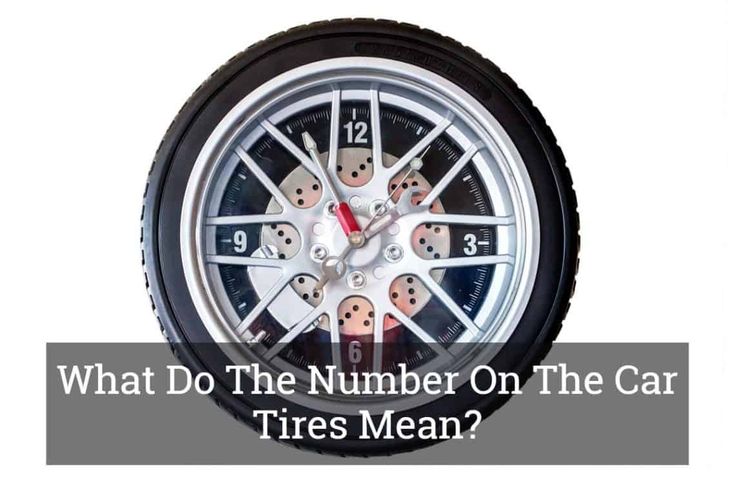 Based on mile wear tests carried out by Consumer Reports, T-rated tires are proven to have longer tread life compared to H-rated knobbies. This benefit somehow compensates for the lower top speed these tires can accommodate.
Based on mile wear tests carried out by Consumer Reports, T-rated tires are proven to have longer tread life compared to H-rated knobbies. This benefit somehow compensates for the lower top speed these tires can accommodate.
On the other hand, H-rated tires continually become more common as factory tires on some popular automobile brands. Despite their shorter life span, H-rated tires can meet tire safety standards and are better suited for higher levels of braking, handling/cornering, and acceleration – perfectly matching the enhanced capabilities of recent family cars and sedans.
Since we are on the topic of H/T tires, it would make sense to give you a list of highly recommended H- and T-rated tires. While there are tons of reputable tire brands in the market, these top picks are lauded by some of the most respectable automakers and automotive publications:
| T-rated Tires | H-rated Tires |
|---|---|
| Michelin Defender LTX (view on Amazon) | Michelin CrossClimate 2 |
| Goodyear Ultra Grip Winter or a higher-speed-rated tire such as Goodyear Assurance WeatherReady | Bridgestone Blizzak WS90 or a higher-speed-rated tire such as Bridgestone Turanza Quiettrack |
| Cooper Evolution H/T | Yokohama Avid Ascend GT |
| Bridgestone Dueler A/T Revo 3 | Michelin Defender T+H (view on Amazon) |
| Pirelli Scorpion All Terrain Plus | Cooper CS5 Ultra Touring – H/V |
| BFGoodrich Advantage T/A Sport LT | BFGoodrich Advantage T/A Sport LT |
| Continental CrossContact LX25 | Continental CrossContact LX25 |
| Yokohama AVID Touring-S | Yokohama Geolandar A/T G015 |
| Yokohama iceGUARD iG52c (winter tire) | General AltiMAX RT43 |
| General AltiMAX Arctic 12 | Hankook Kinergy 4S2 or a higher-speed-rated tire such as Hankook Ventus ST RH06 |
| T-rated Tires | H-rated Tires |
|---|---|
| Cooper Discoverer AT3 4S (for SUVs) | Michelin X-Ice Xi3 (winter tire) |
| General Grabber A/TX (SUV, 4×4) | Firestone WeatherGrip |
| Toyo Open Country A/T III (view on Amazon) | Dunlop Direzza DZ102 (view on Amazon) |
Vehicle owners are discouraged from doing this, as using tires with different speed ratings can result in premature tire degradation. Furthermore, it goes against one of the best practices for improving grip on slippery surfaces: putting tires that have the most tread at the rear.
Furthermore, it goes against one of the best practices for improving grip on slippery surfaces: putting tires that have the most tread at the rear.
Another danger with mixed speed ratings is the tendency to oversteer, which adversely affects vehicle handling. Luckily, placing the T-rated tires on the front axle (regardless of the axle driven) prevents this from occurring. Note, however, that mixing tire speed ratings should be done as a last resort and reserved only for worst-case scenarios.
Opting for H-rated tires is fine – provided that you keep to the 130-mph top speed limit instead of the 149-mph limit supported by a V-rated tire. To add, make sure to use the same speed rating on all fours for best performance.
As a precaution, never opt for tires with a speed rating two tiers lower than the original requirement for your vehicle. Not only does it increase the chances of tire failure at high speeds, but it can also invalidate your insurance.
The H or T markings on Michelin tires indicate the same speed rating as on any other tire brand. But unlike most tires which are only given a single rating, Michelin tires can accommodate a top-speed range between 118 to 130 mph (190 to 209 km/h).
“94T” markings on a tire denote its service description. These numbers indicate the specific tire has a load-carrying capacity of 670 Kg (1,477 lbs.) when adequately pressurized and a speed rating of 118 mph (190 km/h).
Using T-rated tires would be inadequate, as 118 mph is considered slow and too delicate for race cars and other high-performance, sports-oriented wheelers. Z-rated tires (or above) will serve the purpose better in such settings. For amateur racecars, the least you can go for is an H-rated tire.
In summary, H and T markings on tires refer to the maximum speeds they can support – given payload capacity, recommended tire pressure, and ideal road conditions are met. H-rated tires can withstand up to 130 mph (210 km/h), with T-rated ones supporting up to 118 mph (190 km/h). If you are driving anything from a standard sedan to a sport SUV, you are most likely in need of one of these.
H-rated tires can withstand up to 130 mph (210 km/h), with T-rated ones supporting up to 118 mph (190 km/h). If you are driving anything from a standard sedan to a sport SUV, you are most likely in need of one of these.
Now that you know what H/T on tires signify, it is equally important to understand that these speed ratings are only true for brand-new tires that have not experienced damage, puncture, or any form of repair. That said, it is always advisable to go for new over secondhand tires when buying replacements for your car. Doing so ensures you adhere to the speed limits appropriate to your vehicle.
Parameters such as speed index and load index are extremely important when choosing tires.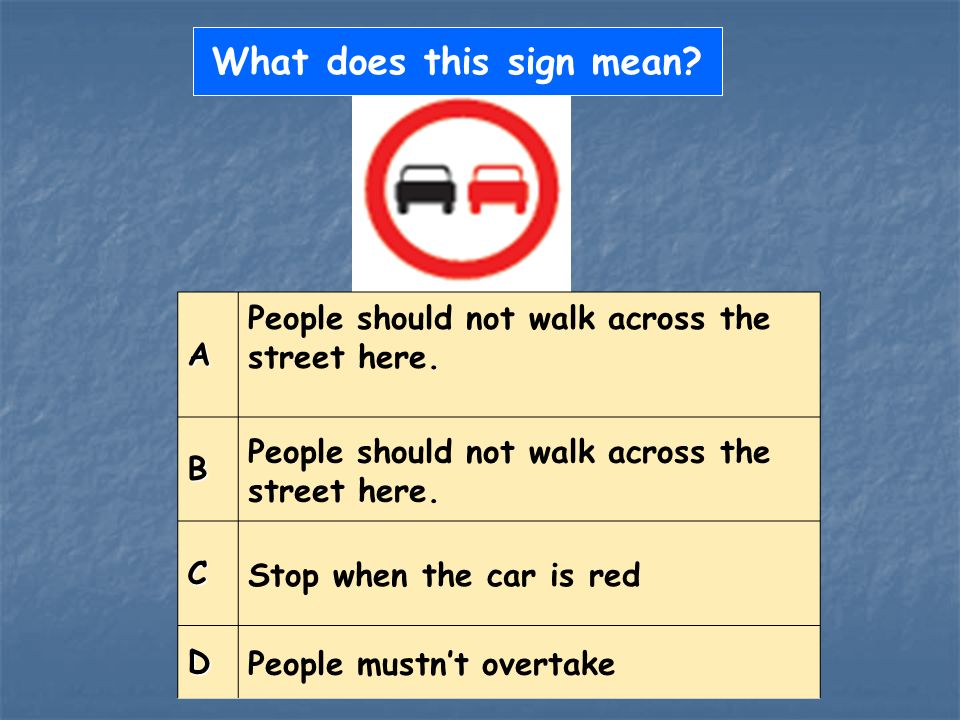 A gross discrepancy between these parameters and the characteristics of your car can cause a dangerous situation on the road. Therefore, when choosing tires, pay attention to the speed and load indices indicated on the sidewall.
A gross discrepancy between these parameters and the characteristics of your car can cause a dangerous situation on the road. Therefore, when choosing tires, pay attention to the speed and load indices indicated on the sidewall.
The speed index indicates the maximum allowable speed at which these tires can be operated. The speed index is indicated by Latin letters from A to Z (as the speed increases). Exception: symbol H, according to speed compliance (210 km/h) located between symbols U and V.
| Speed index | Maximum speed, km/h |
| B | up to 50 |
| C | up to 60 |
| D | up to 65 |
| E | up to 70 |
| F | up to 80 |
| G | up to 90 |
| J | up to 100 |
| K | up to 110 |
| L | up to 120 |
| M | up to 130 |
| N | up to 140 |
| P | up to 150 |
| Q | up to 160 |
| R | up to 170 |
| S | up to 180 |
| T | up to 190 |
| U | up to 200 |
| H | up to 210 |
| VR | over 210 |
| V | up to 240 |
| Z | over 240 |
| W | up to 270 |
| Y | up to 300 |
| ZR | "without Borders" |
Load index (load factor, load index) indicates the maximum weight (in kilograms) at which the size and geometry of the contact patch is maintained, and the tire retains all its characteristics. When choosing tires, keep in mind that the weight is not always evenly distributed between the four wheels. Sometimes (during hard braking, in a turn) most of the weight can fall on two or even one wheel.
When choosing tires, keep in mind that the weight is not always evenly distributed between the four wheels. Sometimes (during hard braking, in a turn) most of the weight can fall on two or even one wheel.
| Load index | Weight, kg. | Load index | Weight, kg . | Load index | Weight, kg . | Load index | Weight, kg . |
| fifty | 190 | 70 | 335 | 90 | 600 | 110 | 1060 |
| 51 | 195 | 71 | 345 | 91 | 615 | 111 | 1090 |
| 52 | 200 | 72 | 355 | 92 | 630 | 112 | 1120 |
| 53 | 206 | 73 | 365 | 93 | 650 | 113 | 1150 |
| 54 | 212 | 74 | 375 | 94 | 670 | 114 | 1180 |
| 55 | 218 | 75 | 387 | 95 | 690 | 115 | 1215 |
| 56 | 224 | 76 | 400 | 96 | 710 | 116 | 1250 |
| 57 | 230 | 77 | 412 | 97 | 730 | 117 | 1285 |
| 58 | 236 | 78 | 425 | 98 | 750 | 118 | 1320 |
| 59 | 243 | 79 | 437 | 99 | 775 | 119 | 1360 |
| 60 | 250 | 80 | 450 | 100 | 800 | 120 | 1400 |
| 61 | 257 | 81 | 462 | 101 | 825 | 121 | 1450 |
| 62 | 265 | 82 | 475 | 102 | 850 | 122 | 1500 |
| 63 | 272 | 83 | 487 | 103 | 875 | 123 | 1550 |
| 64 | 280 | 84 | 500 | 104 | 900 | 124 | 1600 |
| 65 | 290 | 85 | 515 | 105 | 925 | 125 | 1650 |
| 66 | 300 | 86 | 530 | 106 | 950 | 126 | 1700 |
| 67 | 307 | 87 | 545 | 107 | 975 | 127 | 1750 |
| 68 | 315 | 88 | 560 | 108 | 1000 | 128 | 1800 |
| 69 | 325 | 89 | 580 | 109 | 1030 | 129 | 1850 |
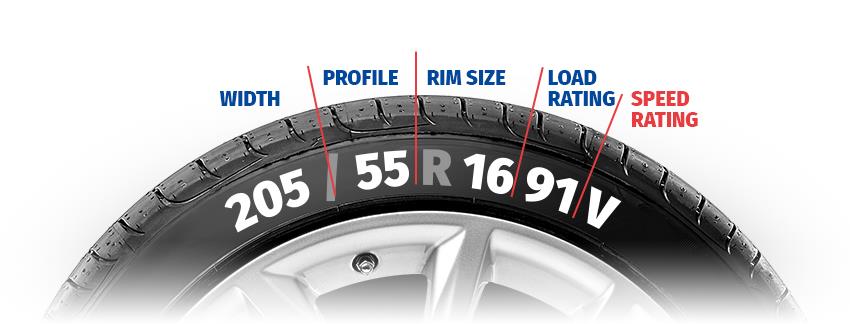
These designations can mainly be seen in the writing of the tire model and on the tire itself.
A.G.T. - (All Grip Traction) - all-weather tire.
B.S.W. - (Black Side Wall) - black letters on the sidewall of the tire (in the designation of the tire brand).
C.M.S. - (Construction Mining Service) - tires for mining and construction equipment.
FB - (Flat Base) - tire without rim protection.
FR - (Flange pRotector) - tire with disc rim protection.
H.C.T. - (Heavy Constructor Transport) - tires for heavy construction equipment.
L.C.M. - (Logging/Construction/Mining) - tires for timber, construction, mining equipment.
LI - (Load Index) - load index.
L.P.T. - (Low Platform Trailer) - tires for low-frame trailers and trailers.
LT - (Light Truck) - tires for light trucks, microcars, small commercial vehicles, heavy SUVs.
M.L. - (Mining Logging) - tires for mining and forestry equipment.
ML - (designation for passenger car tires only) - tires with disc rim protection, for Mercedes-Benz or Audi.
M0 - tires designed for Mercedes-Benz.
M3 - tires designed for BMW.
N1, N2, N3 - tires designed for Porche.
N.D. - (Non Directional) - non-directional tire.
N.H.S. - (Non Highway Service) - not for express roads.
O.W.L. - (Outline White Letters) - contour white letters on the sidewall of the tire.
P - (Passanger) - tires for passenger cars.
Feinf. - (Reinforced) - a tire with additional layers of cord (reinforced construction).
S.A.G. - (Super All Grip) - off-road tires.
S.L. - (Limited Service) - limited use.
SY - (Speed sYmbol) - tire speed index.
TL - (TubeLess) - tubeless tire.
TT - (Tube Type) - tube tire.
U.G.S. - (Undeground Special) - tires for underground equipment.
W.S.W. - (White Side Wall) - a white stripe on the sidewall of the tire.
XL - (eXtra Load) - tire with increased load.
TWI - wear indicator
In the process of choosing car tires, tire marking plays a decisive role.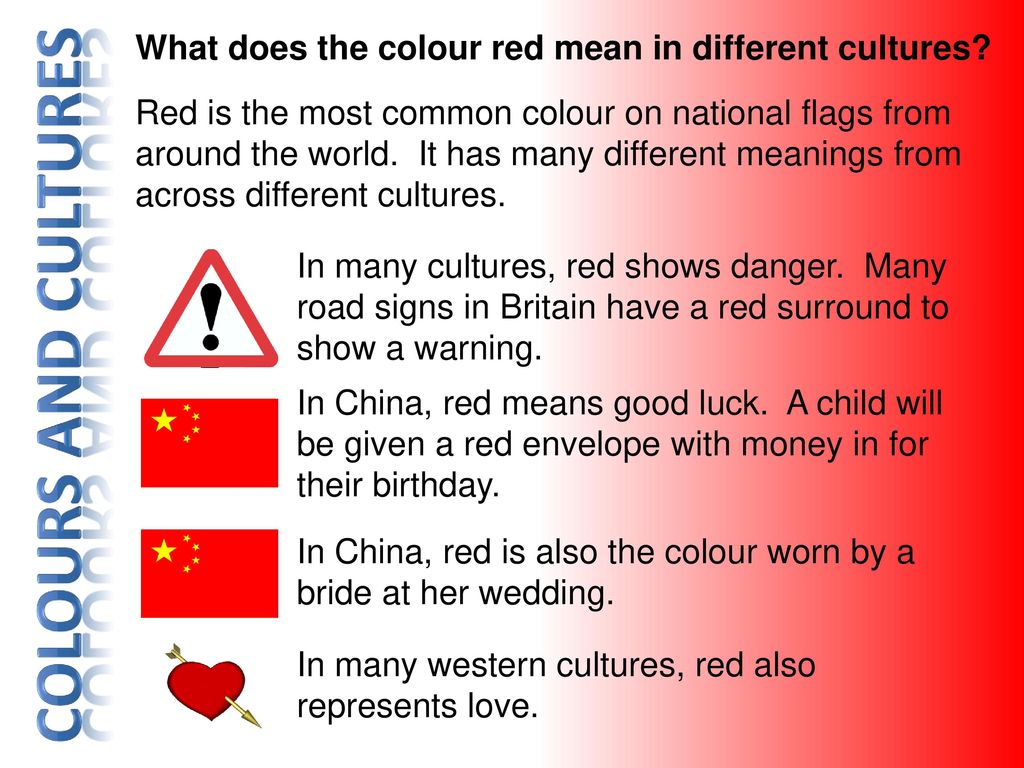 This is an alphabetic or numeric designation of specific product parameters. Tire markings are usually applied to the outer bead. However, in models of some manufacturers, this rule is violated. In this case, the tire marking should be looked for on the inside of the product.
This is an alphabetic or numeric designation of specific product parameters. Tire markings are usually applied to the outer bead. However, in models of some manufacturers, this rule is violated. In this case, the tire marking should be looked for on the inside of the product.
The alphanumeric code allows the buyer to learn about the key characteristics of the rubber. Thus, tire marking includes the designation of maximum loads on the product (load index), maximum speed (speed index) and other parameters.
In recent years, the number of parameters encrypted in alphanumeric codes has increased significantly. This is due, first of all, to the fact that the range of tires has significantly expanded, respectively, the marking can now indicate not only the key parameters of products, but also additional ones. Also, difficulties in choosing a suitable tire model can often arise due to the so-called "double standards" of manufacturing countries. For example, European tire markings differ significantly from US alphanumeric codes.